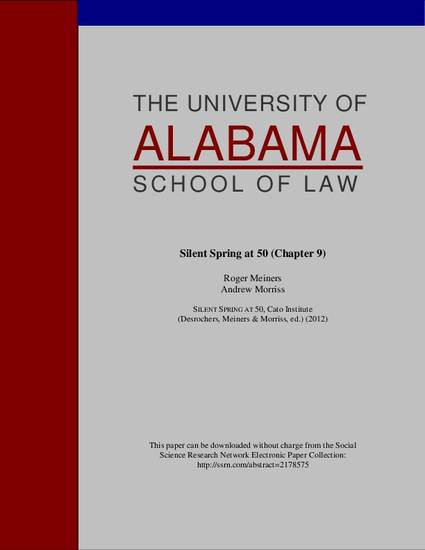
This chapter from the book Silent Spring at 50 analyzes the 1950s struggle over US food policy between USDA and FDA and how that struggle set the stage for the impact of Rachel Carson’s Silent Spring. Using a public choice/interest group analysis, the chapter examines how the two agencies reacted to the large scale transformation of US agriculture and food production during and following World War II. Just as agriculture underwent a dramatic productivity revolution that changed the face of American farming, marketing, new home appliances, and increased participation in the labor force by women radically changed the kinds of foods Americans ate. The consumption of processed foods increased significantly, and, concomitantly, concern about the purity of those foods increased as well. These trends served as the backdrop for a struggle between FDA and USDA over multiple dimensions of agricultural policy, including pesticide regulation. Using the records of hearings held in 1950 and 1951, we explore how the competing interest groups involved used the issue in their larger struggle over control of regulation of processed foods. We then fit the struggle into Bruce Yandle’s “Bootleggers and Baptists” theory of regulation.
Available at: http://works.bepress.com/andrew_p_morriss/205/
